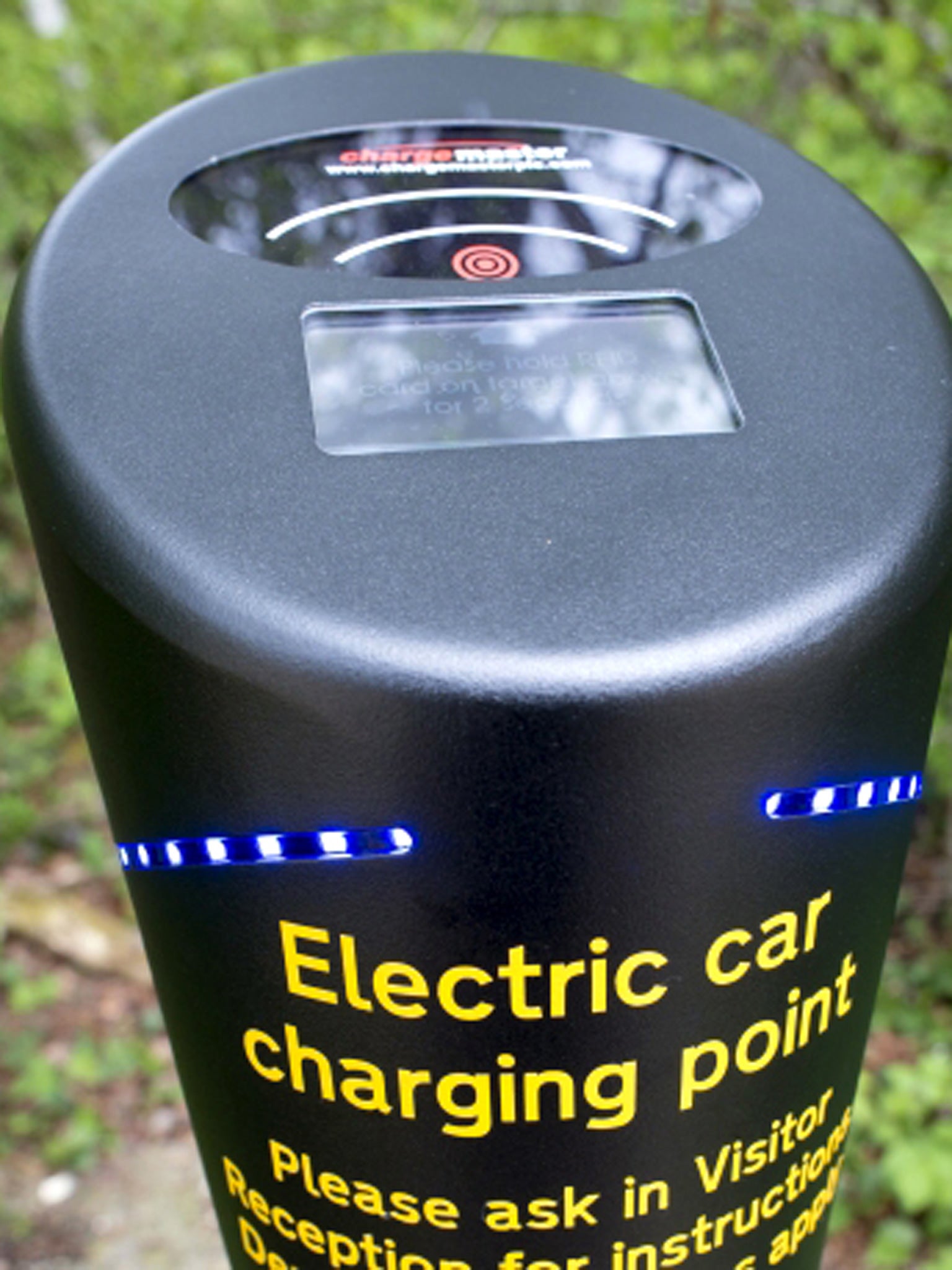Simon Calder: Socket fuel - an electric adventure
The man who pays his way

Pictures of the Renault Twizy make it look cute (electrocute, if I may): a perky, 21st-century version of the Citroën 2CV. The perfect country runabout, which is how I persuaded my wife to join me on board for the jaunt described on the next two pages.
The New Forest is the nucleus of electric travel in the UK. The national park comprises an alluring blend of wild heathland, tame ponies and ancient woodland, but it is also painfully susceptible to the internal combustion engine. In summer, it can take an hour to circumnavigate the one-way system in Lyndhurst, the pretty town that serves as the forest's capital. So, the commendable new scheme for renting out electric cars is a good way to reduce emissions.
So, too, is the venture by Best Western, the consortium of individually owned hotels across Britain, to establish the first national hotel network of electric car-charging points. The idea is that you can recharge overnight, or merely get a top-up over lunch. And, sure enough, the prime parking space at the Best Western Forest Lodge in Lyndhurst is assigned to electric cars.
Refuelling an electric car is as easy as plugging in an ordinary 13-amp appliance. Because that is all it is. "It uses the same power as a hair-dryer," I had been told by Stephen Vine of New Forest Environmental, which supplies the vehicles. In the time it takes to munch through a salad, swig two cups of tea and claim a one-fifth discount with the Brand New Forest Card that comes free with each electric car rental, the Twizy had recharged to – well, 75 per cent. No problem: the distance to the next point on the power drive was 40 miles, and the publicity for the rental scheme promises: "The funky electric vehicles can reach a top speed of 50mph and travel for up to 62 miles."
Well, that sounds like an hour's drive in our glorified lawnmower, with half-a-dozen miles in reserve. I gallantly contorted myself into the passenger "seat". Charlotte set the controls for the former heartland of the British power industry and drove while I looked out of the window – and occasionally glanced at the dials, both of which activities proved progressively less relaxing. In a lawnmower – sorry, electric car – you feel comfortable amid the towering trees and tranquil lanes of the New Forest, but once on the high-speed A31 you feel intensely vulnerable.
When the highway to the sun funnels into a single carriageway, it gets worse: when the Twizy mixes with bigger, faster vehicles (ie just about anything produced in a vehicle factory since 1901) and their impatient drivers, it produces a toxic cocktail. When a 50-seater coach from north London overtook, the driver was relying on the oncoming traffic slowing down before he could pull in. The battery was draining as rapidly as our confidence. Dorset does not have the same network of charging points as its neighbouring county, which should henceforth be called Ampshire. With an emergency refuelling stop at the Bere Regis Little Chef and a little help from a taxi, we made the target of a mouldering nuclear reactor. (No, really, you'll love it ...)
After that treat, Charlotte did both herself and the mission a favour by performing a volte-face and catching a fast, comfortable, electric train. As I watched her accelerate away, another awful pun assailed my travel-weary brain. She was going Ohm, by the path of least resistance.
Lightness of being
There is no easy way to say this, but with the Twizy lighter on ballast, its performance improved significantly. I whirred back to the New Forest along country lanes, parallel to the coast, keeping my electrical account fractionally in credit. You discover a whole new electro-geography: Lytchett Minster appealed, not because it is a pretty Dorset village but because it has a campsite. Where there be caravans, there be electricity of an outdoor nature.
The friendly people at this pit stop, like all the others, declined offers of cash. As the Twizy slowly recharged, I nipped along to St Peter's Finger (a pub, not a gesture from a fellow motorist). After a day of low-speed driving, I practised low-speed drinking, spinning out a pint of Badger for the next hour. Then I spun away from the sunset, around Poole Harbour and through the back end of Bournemouth – hitting 51mph (downhill with the wind behind) at one point.
I purred past the Electricity Museum in Christchurch, which has been dark since December when the meter (primed by the power company SSE) ran out. But that tricky time, motion and battery charge equation went awry at Hinton Admiral; a wrong turn cost me several miles and sent me into arrears.
Beware of static
Completing the electrical circuit proved tricky. As the embers of the setting sun faded and dusk infiltrated the woodland lane, a lonely signpost gestured "Brockenhurst 5". On my dashboard, the power meter which shows how far the battery will stretch promised a terse "4 miles". Could the trip end with the vehicle embarrassingly and expensively static? By now, though, I had figured that the dashboard display carried a parenthetical "4 miles (if you carry on driving like you have done all day, pal)". So, I crept along as if on tiptoe, through a succession of dreamy villages, one of which is indeed called Tiptoe.
As a queue built behind me, my geo-electrical odds improved from 5/4 against to evens. I reached Brockenhurst's red-brick cottages at little more than walking pace, disconnected myself from the vehicle and felt strangely energised.
Subscribe to Independent Premium to bookmark this article
Want to bookmark your favourite articles and stories to read or reference later? Start your Independent Premium subscription today.

Join our commenting forum
Join thought-provoking conversations, follow other Independent readers and see their replies
Comments